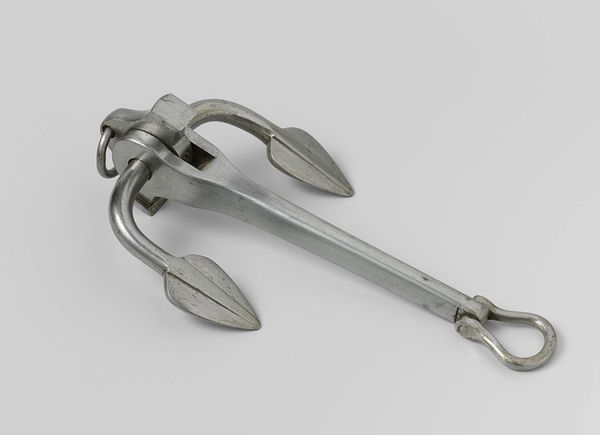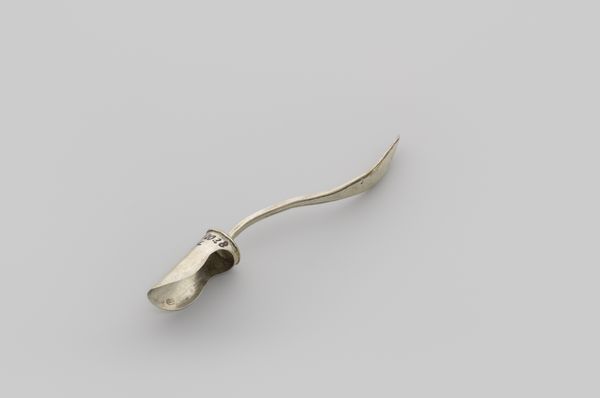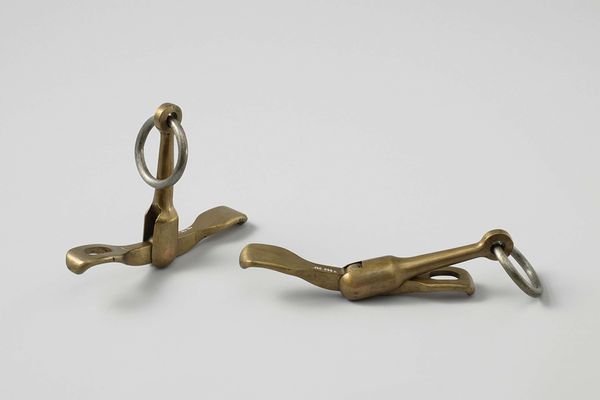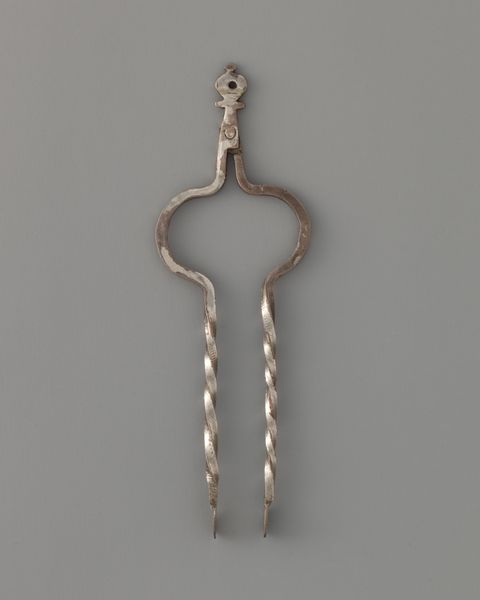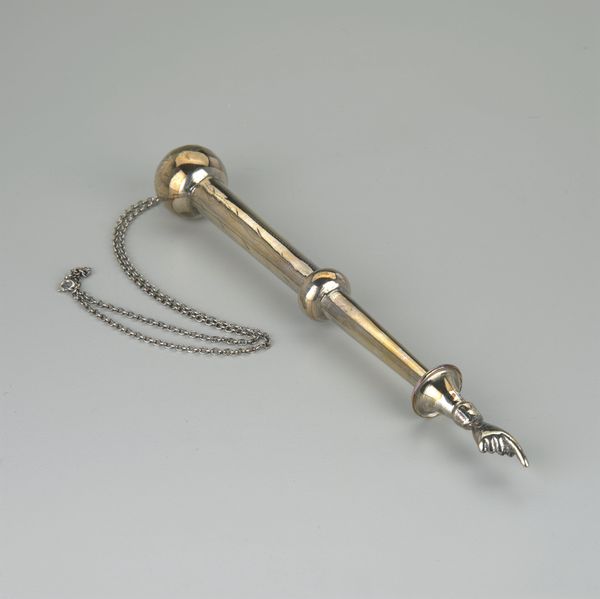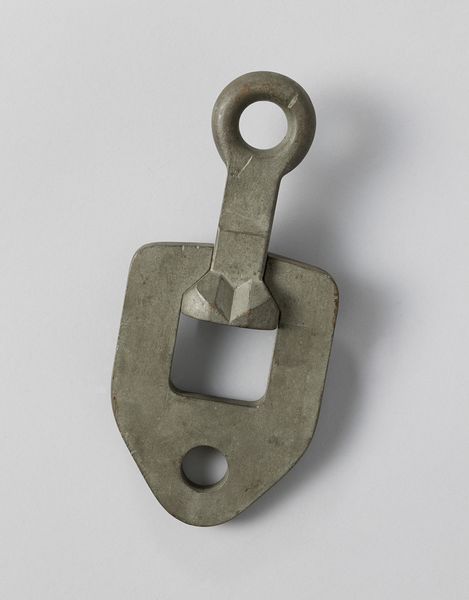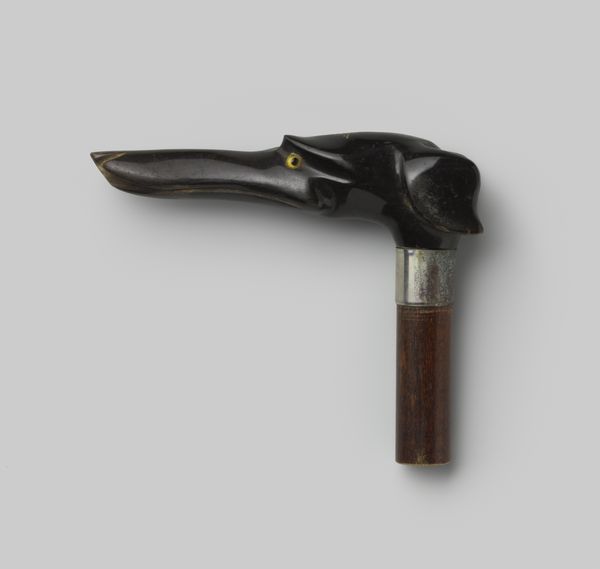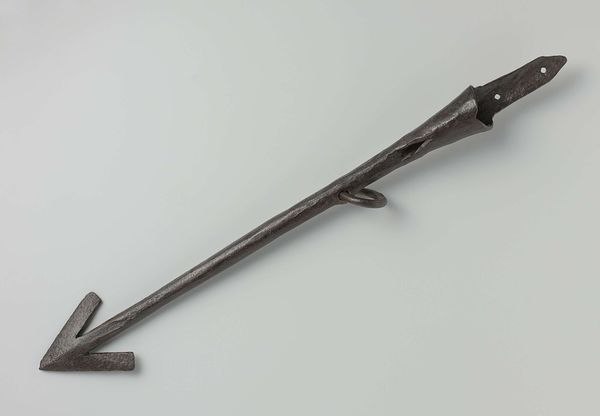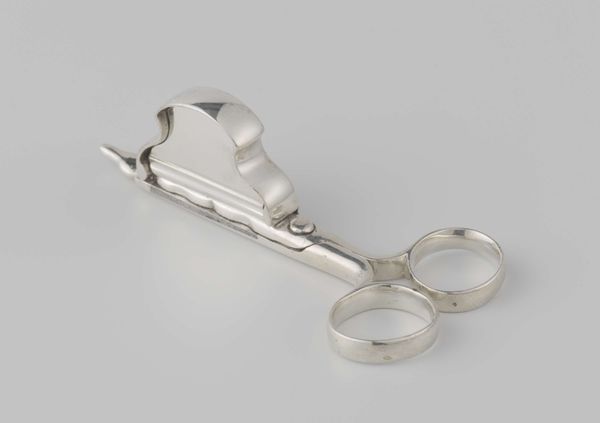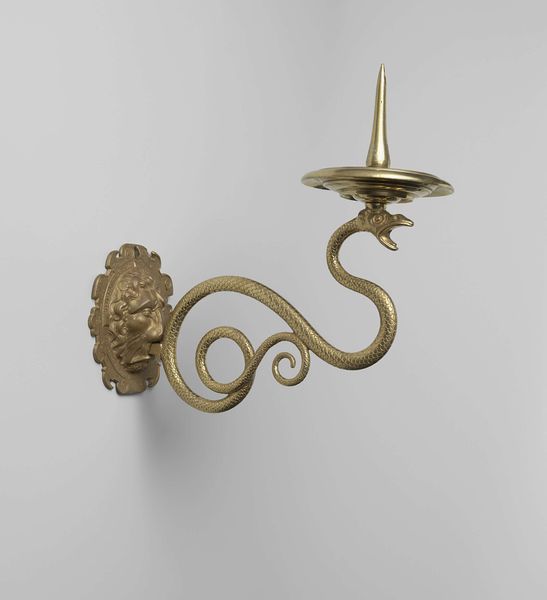
carving, metal, sculpture, wood
#
carving
#
metal
#
figuration
#
sculpture
#
wood
#
decorative-art
Dimensions: total length 38.5 cm, anchor stock width 9.2 cm, span 20.5 cm
Copyright: Rijks Museum: Open Domain
Curator: This piece before us is a carved "Model of an Anchor" dating back to approximately 1859, by G. de Bruijn. It’s constructed from wood and metal, a smaller-scale sculpture intended to depict… well, an anchor! Editor: It's incredibly still, isn’t it? Even for a sculpture of an inanimate object, there's a striking serenity in its lines and honeyed tone. What immediately comes to mind is a symbol of safety or permanence. Curator: Anchors carry incredibly rich and dense symbolism. We find it across various cultures and religions—often representing hope, steadfastness, and security. For sailors especially, it was a potent image representing their safe return. But one can think more broadly and culturally—what images of solidity and perseverance still move us today? Editor: Certainly. Speaking purely of its form, the artist seems interested in right angles juxtaposed against very deliberate curves. Notice how the shaft intersects cleanly, providing balance against the flared arms. There's something satisfyingly geometric, despite it depicting something that exists in a more turbulent and unpredictable domain, the sea. Curator: True, the sea represents everything uncontrolled and uncontrollable. That might be precisely why the anchor has such significance—it tethers us to reality, resisting the capricious whims of fate. I wonder what types of emotional stability its original commissioner was trying to evoke. Editor: An intriguing consideration. Also note the details; the maker gave it the look of utility: its surface wears that warm and worn look—likely from repeated handling or polishing through decades of owners. The surface tactility contrasts to the sharpness of the arrowhead edges. It also reveals itself not as just a literal model, but a meditation on functional design. Curator: Yes, that interplay of the tangible versus the conceptual really brings forward something potent about it! By giving us an intimate, tangible experience, Bruijn also communicates its conceptual resonance in history. Thank you for taking a closer look at the form and allowing me to connect its images to culture. Editor: Thank you for opening up the anchor as something beyond a physical object: it now holds symbolic weight and design awareness.
Comments
No comments
Be the first to comment and join the conversation on the ultimate creative platform.

